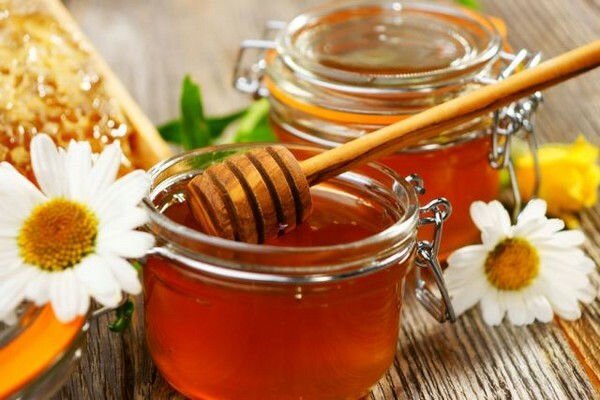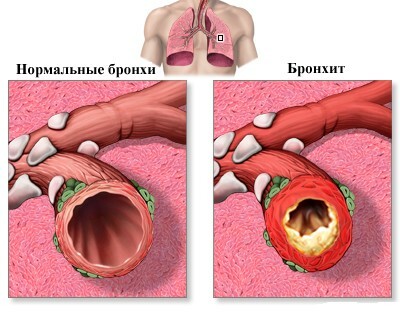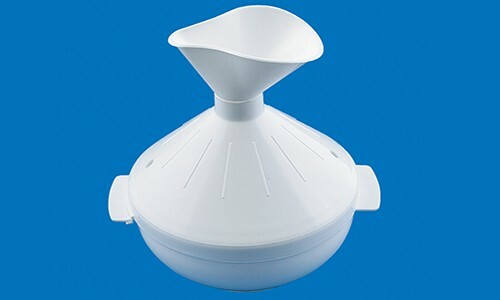- About bronchitis
- Use of honey
- Contraindications
- Recipes
Since ancient times, honey has been used not only as food, but also as a healing remedy for many diseases. This product is particularly effective in the treatment of certain infectious diseases affecting the upper respiratory tract, for example, such as bronchitis. At its core, this disease is an inflammation of the bronchi accompanied by a productive cough. The traditional treatment of bronchitis is the use of various pharmacological drugs that eliminate both the cause and symptoms of the disease. However, honey in bronchitis has also proven effective. This product contains many nutritional and medicinal components that help the human body cope with the disease.

About bronchitis
In most cases this disease is a complication of acute respiratory viral infection or infectious diseases of the upper respiratory tract. If the disease was too aggressive and it could not be cured at the initial stages of the course, the pathological process can descend and damage the bronchi. When the infection is still in the upper parts, the cough will be dry, i.e. without spitting out. At the same time with bronchitis cough, as a rule, productive, with a mucous or purulent discharge.

To prevent this and prevent the development of more serious complications, it is necessary to consult a specialist as soon as possible. The standard of treatment includes the use of phlegm-diluting drugs, antibiotics and medicines from the NSAID group. It should be clarified that honey should be used as an additional remedy and not at the expense of the treatment prescribed to the doctor. Thanks to the combined effects of traditional and traditional medicine, it is possible to get rid of the diseases in the shortest possible time and return to normal life.
Primary schoolchildren and children of preschool age are most prone to bronchitis. This is due to several factors.
- Imperfection of immunity. Protective reactions of the children's body are just beginning to form, so they are characterized by frequent colds and infections of the respiratory tract.
- Close team. Little children attending kindergarten spend a lot of time in the company of their peers. They eat, play, learn together and even sleep in the same room. It is clear that close contact of this kind is a good medium for transmission of infection.
Use of honey
What is the healing effect of this product? It turns out that honey has antibacterial action against pathogenic microorganisms. Also in its composition there are natural antioxidants, eliminating signs of inflammation. In addition, honey contains a large number of all kinds of vitamins, minerals, proteins and fats.
There is also a positive effect of honey on the strengthening of immunity in the off-season, when the vital forces of the body are most weakened and need support. This property is especially useful in the treatment of bronchitis, cold and flu.
In addition, if carried out together with honey inhalation, then it has a moisturizing effect. This effect is very important in the treatment of bronchitis. With prolonged cough, the bronchial mucosa can become irritated, and as a result, synthesis and outflow of mucus from the respiratory tract is disrupted. To prevent this, it is recommended to perform honey inhalations.
Contraindications
In some cases, the use of honey for medical purposes should not be carried out. It is forbidden to conduct medical procedures with honey to people who have an allergic reaction to it. The severity of individual intolerance can vary greatly from almost imperceptible to life threatening. In most cases, the allergic reaction manifests itself in the form of angioedema( Quincke's edema), urticaria, or gastric disorder. In rare cases, the reaction proceeds according to the type of anaphylactic shock, which can be accompanied by blanching of the skin, pressure drop and loss of consciousness. In such situations, an ambulance crew should be called immediately.
For the period of treatment, children are not recommended to give more than 3 teaspoons of honey per day. In this case, you should not give all the honey at once, but it is better to give on a spoon before each meal. Also, do not give a large amount of honey to elderly people, leading a sedentary lifestyle. Excessive consumption of sweet increases the level of sugar in the blood, which adversely affects the vessels in old age.
It is contraindicated to carry out honey inhalation for certain diseases:
- Pulmonary haemorrhage;
- Severe degree of heart failure;
- Emphysema of the lungs;
- Myocarditis;
- Congenital or acquired heart defects;
- Pneumosclerosis.
When pregnant
Women in the position of honey should be taken even if there are no respiratory tract diseases. It was noted that the use of honey in the first trimester of pregnancy reduces the severity of toxicosis, smooths out emotional disturbances, and suppresses anxiety.
The information in this text is not a guide to action. For more accurate information about the treatment of your disease, you need to contact a specialist.
Recipes of
There is honey uncontrolled. There is a certain amount that is calculated based on body weight, however, on average, 75 grams per day should be consumed. For children under 10 years not more than 40 g. This amount should also be divided into several receptions. It is better as a dessert after the main meal.
Honey and aloe
If the disease is characterized by a prolonged course, then the combination of honey with aloe helps very well. To prepare this product, you need to take a few leaves of aloe and finely chop. Before this, it is desirable to put them in the refrigerator for a week. Then you need to take 150 g of birch buds and the same amount of lime color. Mix together and add 0.5 liters of purified filtered water. Let it brew for an hour. In parallel with this, add finely chopped aloe in honey. Mix all this together, boil over low heat for two minutes. Turn off the heat, allow the broth to cool, pour into a bottle and add a little olive oil. Keep container with decoction in a cool, protected from direct sunlight. Take 1 time a day before meals.
Honey and butter
This product should be applied as a compress. For its preparation you need to take in equal proportions honey and butter. Put the ingredients in the enamelware and a small saucepan. Put on a slow fire. If possible, it is better to use a water bath, since from such heating, part of the vitamins and other nutrients contained in honey can be lost. After the components are mixed, it is necessary to allow the mixture to cool, and then use it as an ointment. Rub the mixture into the back and chest area. For greater effectiveness, it is recommended to apply ointment before bedtime.
Inhalation with honey
For carrying out inhalations, a special container, which is sold in pharmacies, will be required. Of the components needed, 50 g of honey and 20 g of propolis. Then you need to take a container, pour it with boiling water and add components there. To reduce the irritation of the mucosa, you can also add a couple drops of peppermint oil. After that, the inhaler is covered with a lid and you can begin to carry out the procedures. The first breath is desirable not to do too deep otherwise there is a high probability of burning yourself.

Honey with onion
Both products have antibacterial effect, however, in combination this effect is greatly amplified. To prepare a healing agent, you need to take a fresh onion and finely chop it, squeeze out the whole juice, and then add honey. On 10 g of onions, it is required to take 50 g of honey. This drug should be taken 1 time a day before meals.
